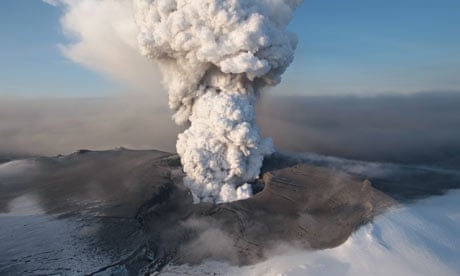The eruption of the Eyjafjallajokull volcano is unlikely to have any significant impact on climate but has caused a small fall in carbon emissions, experts say.
Although large eruptions such as Mount Pinatubo in 1991 can spew out enough material to shade and cool the planet, recent activity in Iceland is very small in comparison. The ash cloud has not reached the high atmosphere, where it would have the most effect, and it contains little sulphur, which forms reflective droplets of sulphuric acid. The World Meteorological Organisation in Geneva says any cooling effect from Eyjafjallajokull will be "very insignificant".
A larger effect on the atmosphere, though still small in global terms, comes from the mass-grounding of European flights over the past few days. According to the Environmental Transport Association, by the end of today the flight ban will have prevented the emission of some 2.8m tonnes of carbon dioxide since the first flights were grounded.
The volcanic eruption has released carbon dioxide, but the amount is dwarfed by the savings. Based on readings taken by scientists during the first phase of Eyjafjallajokull activity last month, the website Information is Beautiful calculated the volcano has emitted about 150,000 tonnes of CO2 each day. Worldwide, the US Geological Survey says volcanoes produce about 200m tonnes of carbon dioxide every year.

Comments (…)
Sign in or create your Guardian account to join the discussion